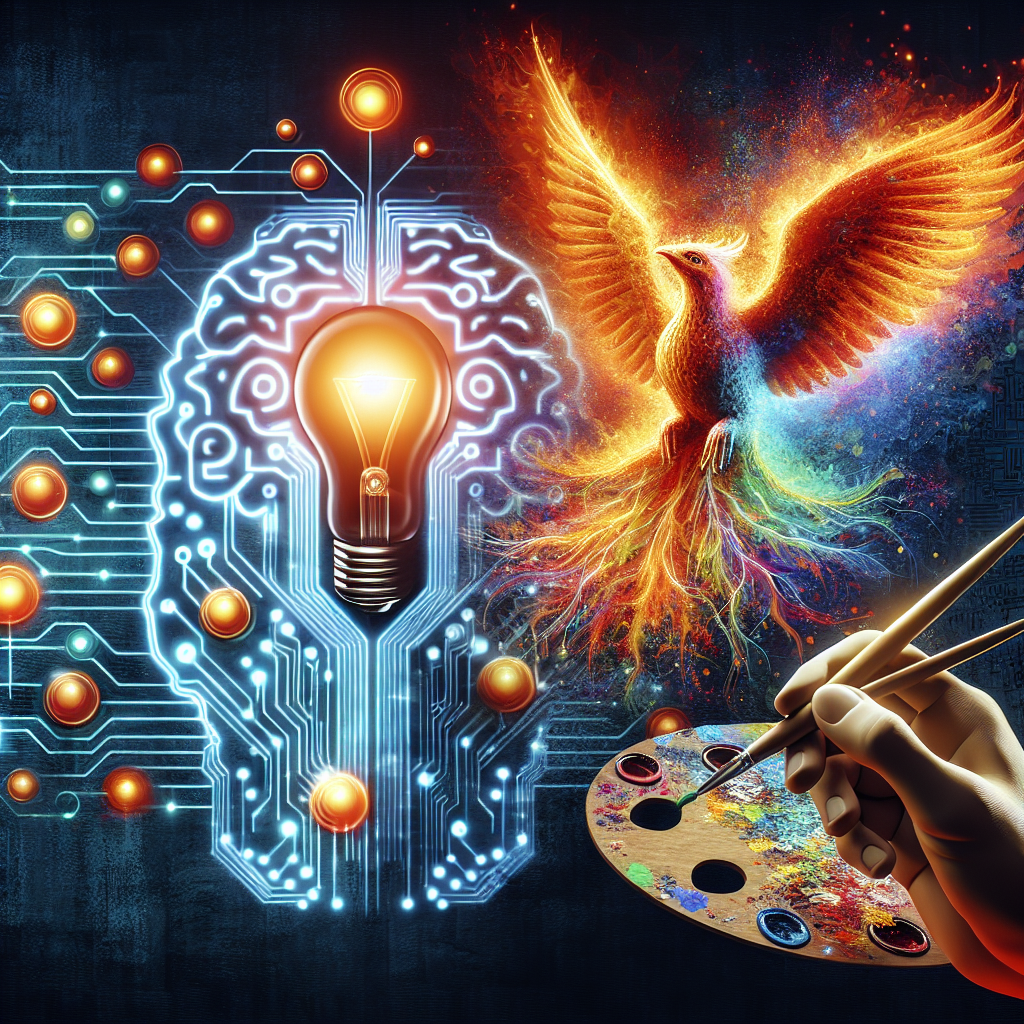The Creative Revolution: How AI is Changing the Way We Think About Creativity
In recent years, artificial intelligence (AI) has made significant advancements in various fields, including creativity. AI is now being used to assist and enhance human creativity in ways that were previously unimaginable. This has led to a creative revolution, where AI is changing the way we think about creativity and its potential applications.
AI has the ability to analyze vast amounts of data and generate insights that can inspire and inform creative work. This can be particularly useful in fields such as marketing, design, and music, where creativity plays a crucial role in driving innovation and success.
One of the key ways in which AI is changing the creative process is through the use of generative algorithms. These algorithms can analyze existing creative works and generate new ideas or designs based on patterns and trends found in the data. For example, AI can analyze thousands of successful marketing campaigns and generate new ideas for ad copy or visuals that are likely to resonate with consumers.
AI can also assist in the creative process by providing feedback and suggestions to human creators. For example, AI-powered writing tools can help writers improve their work by suggesting alternative phrases, correcting grammar and spelling errors, and even providing insights on tone and style. This can help writers refine their work and produce higher-quality content in less time.
In the field of design, AI can be used to generate new concepts and prototypes based on existing designs and trends. This can help designers explore new ideas and push the boundaries of what is possible in their creative work. AI can also be used to automate repetitive tasks in the design process, allowing designers to focus on more complex and innovative work.
In the music industry, AI is being used to generate new songs and compositions based on existing music. AI-powered music composition tools can analyze a vast library of music and generate new melodies, harmonies, and rhythms that are unique and original. This can be particularly useful for musicians who are looking for inspiration or struggling to come up with new ideas.
AI is also being used in the field of visual arts to create new and innovative works of art. AI-powered tools can analyze existing artworks and generate new pieces based on the style, themes, and techniques found in the data. This can help artists explore new creative possibilities and push the boundaries of traditional art forms.
Overall, AI is changing the way we think about creativity by expanding the possibilities of what is possible in the creative process. AI can inspire new ideas, provide feedback and suggestions, and automate repetitive tasks, allowing human creators to focus on more complex and innovative work.
FAQs
Q: Will AI replace human creativity?
A: While AI has the potential to assist and enhance human creativity, it is unlikely to replace human creativity entirely. AI is a tool that can help humans generate new ideas, improve their work, and automate repetitive tasks, but ultimately, creativity is a uniquely human trait that cannot be replicated by machines.
Q: How can AI be used to enhance creativity?
A: AI can be used to analyze data, generate new ideas, provide feedback and suggestions, and automate repetitive tasks in the creative process. By leveraging AI-powered tools and algorithms, creators can explore new possibilities, refine their work, and push the boundaries of what is possible in their creative endeavors.
Q: What are some examples of AI-powered creative tools?
A: Some examples of AI-powered creative tools include writing assistants that can help writers improve their work, music composition tools that can generate new songs and compositions, and design tools that can generate new concepts and prototypes based on existing designs. These tools can assist and enhance human creativity in various fields.
Q: How can AI benefit creative industries?
A: AI can benefit creative industries by providing new insights, generating new ideas, automating repetitive tasks, and improving the quality of creative work. By leveraging AI-powered tools and algorithms, creators can streamline their workflow, explore new creative possibilities, and drive innovation in their respective fields.
Q: What are the potential drawbacks of using AI in creativity?
A: Some potential drawbacks of using AI in creativity include the risk of overreliance on AI, the potential for bias in AI-generated content, and concerns about job displacement in creative industries. It is important for creators to use AI as a tool to enhance their work, rather than relying on it as a substitute for human creativity.

